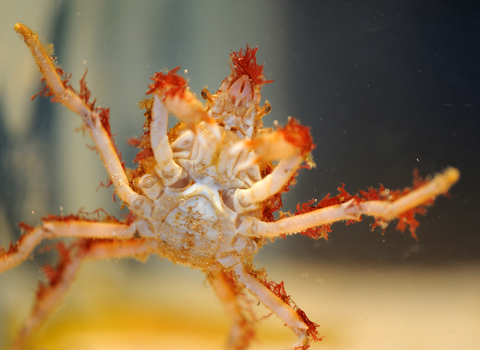
Great Spider Crab ©Amy Lewis
Great spider crab
Despite its name, the great spider crab is actually smaller than the more common European spider crab.
Scientific name
Hyas araneusWhen to see
January to DecemberSpecies information
About
A pear-shaped crab with a pointed face, the great spider crab has long, spindly legs like a spider. Also known as the sea toad, it lives amongst rocks and seaweed from the low tide mark and out to around 50m deep. It is a Northern species, with the UK sitting at the southernmost limit of its range. It is known to be partial to munching on jellyfish.How to identify
Spider crabs are very different to 'typical' crabs. Orangey brown in colour, the great spider crab has long spindly legs like a spider and a distinctive pear-shaped shell. It is smaller than the spiny spider crab, which has an oval and more visibly spiky shell.Distribution
Found around all UK coasts, but less common in the south.Did you know?
Seaweed and other creatures often grow on the back of the great spider crab, providing it with excellent camouflage.Our seas and coastline are in need of protection if we are to keep our marine wildlife healthy. The Wildlife Trusts are working with fishermen, researchers, politicians and local people towards a vision of 'Living Seas', where marine wildlife thrives.
